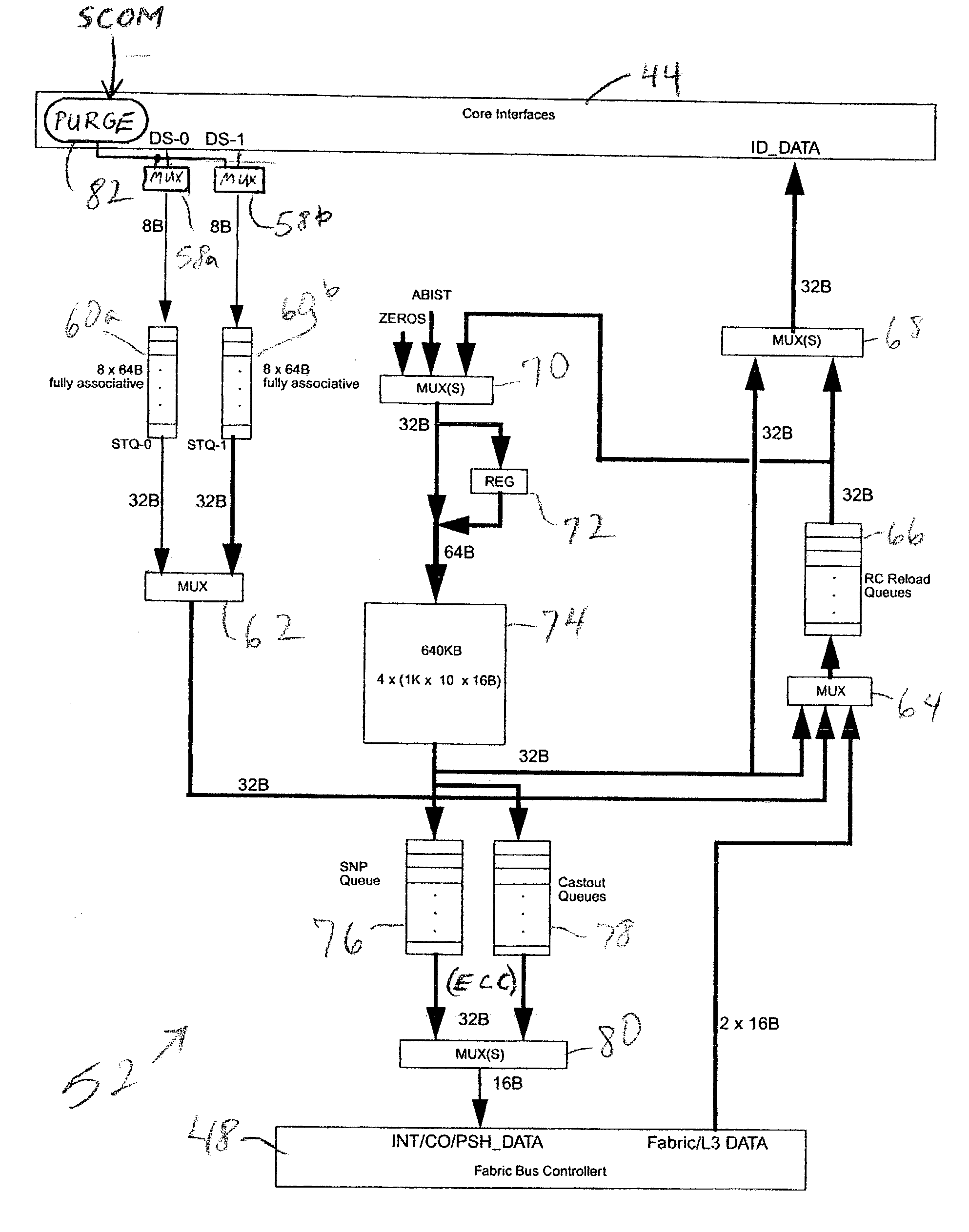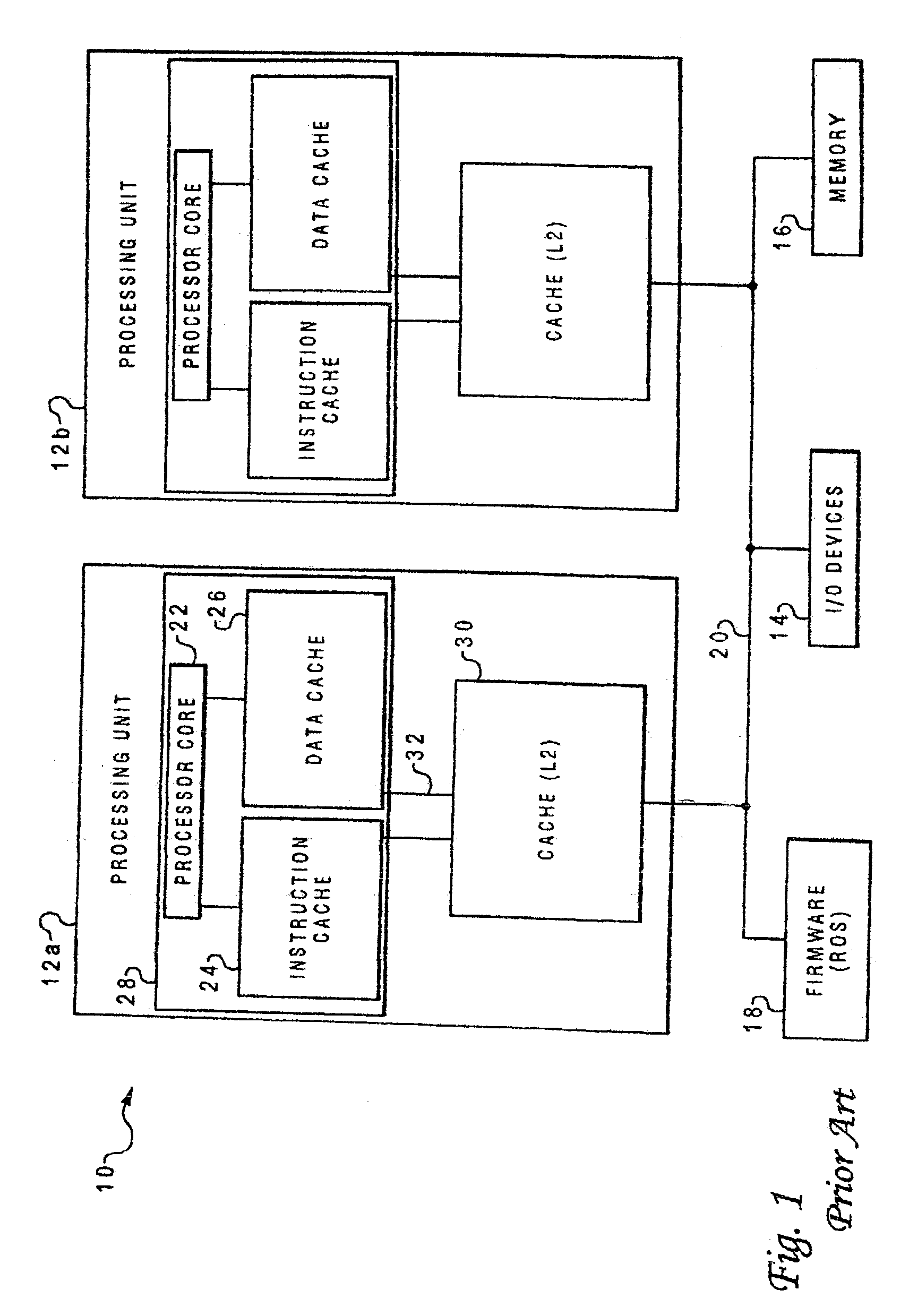Integrated purge store mechanism to flush L2/L3 cache structure for improved reliabity and serviceability
a cache structure and purge store technology, applied in the field of computer systems, can solve the problems of inability to determine what the proper data stream should actually be, inability to detect soft errors, and inability to clean cache structures,
- Summary
- Abstract
- Description
- Claims
- Application Information
AI Technical Summary
Problems solved by technology
Method used
Image
Examples
Embodiment Construction
)
[0027] The present invention is directed to an improved cache construction which is able to "scrub" the values stored in the cache memory, to purge any correctable errors in those stored values so as to reduce the likelihood of an uncorrectable error arising. For caches which utilize error correction code (ECC) having single-bit correct / double-bit detect capability (SBC / DBD), an uncorrectable error might arise if a first soft error is already present but uncorrected in a particular cache line, and then a second soft error is introduced to the same line. If a double-bit error in the line is detected, the machine must be brought to a halt. The present invention accordingly decreases the likelihood of any such system down time.
[0028] While the invention is generally applicable to any type of memory hierarchy having one or more caches, including non-uniform memory access (NUMA) structures, it is particularly useful for larger caches which require improved reliability. In the illustrati...
PUM
 Login to View More
Login to View More Abstract
Description
Claims
Application Information
 Login to View More
Login to View More - Generate Ideas
- Intellectual Property
- Life Sciences
- Materials
- Tech Scout
- Unparalleled Data Quality
- Higher Quality Content
- 60% Fewer Hallucinations
Browse by: Latest US Patents, China's latest patents, Technical Efficacy Thesaurus, Application Domain, Technology Topic, Popular Technical Reports.
© 2025 PatSnap. All rights reserved.Legal|Privacy policy|Modern Slavery Act Transparency Statement|Sitemap|About US| Contact US: help@patsnap.com



